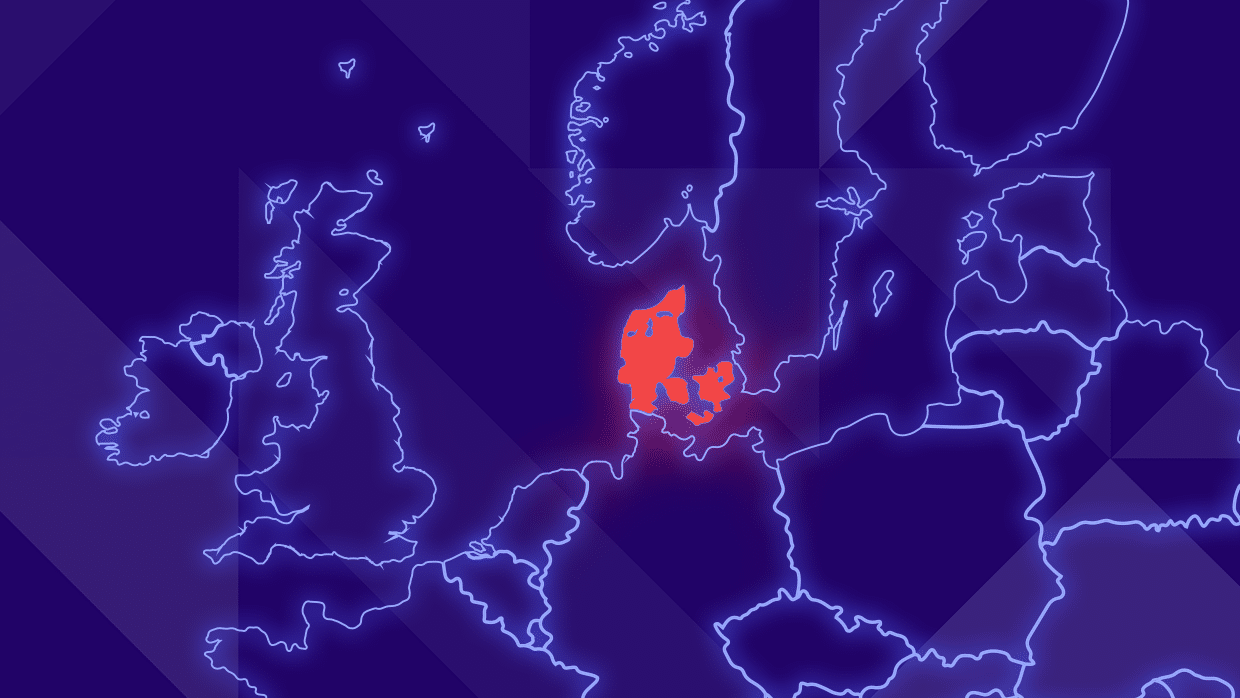Denmark became the latest European nation to experience a wave of coordinated DDoS attacks targeting government and defense websites. Services across multiple departments, including the Ministry of Transport and Denmark’s main citizen portal (borger.dk), were temporarily knocked offline. The pro-Russian group NoName057 claimed responsibility.
While the immediate outages were contained within hours, the incident underscores a growing pattern: DDoS attacks are escalating not only in frequency but also in geopolitical intent. According to Denmark’s Civil Protection Agency, the attacks were “limited in scope” but still managed to disrupt access to critical services relied upon by citizens and government workers. The targeting appeared to be deliberate, mirroring similar campaigns recently observed in Germany, France, and Poland.
This was not Denmark’s first encounter with coordinated DDoS activity. A December 2024 attack on Danish municipalities took down websites in multiple regions, raising early alarms about DDoS resilience gaps in local government systems. Analysts now point to this latest November 2025 campaign as part of a larger strategy by hacktivist groups to exploit soft targets during periods of political tension.
A Year of Escalation
The Denmark attack is one in a series of high-profile events that have marked 2025 as the most active year for DDoS attacks to date. The number of DDoS attacks in the first half of 2025 already surpassed the total attack volume recorded in all of 2024.
Even tech giants haven’t been spared. Elon Musk’s X platform experienced major DDoS disruptions twice within the last year — once in August 2024 and again in March 2025 — showing that even organizations with massive security investments remain vulnerable without consistent validation of DDoS protections.
European Governments Targeted in Q2
We’ve seen an increase this year in the activity of geopolitical groups that weaponize DDoS attacks – specifically, web-based attacks – to take down Europe’s critical services, including online portals, communication platforms, and public data access. The pattern is unmistakable: adversaries are aiming for maximum disruption, often using low-volume, application-layer attacks that bypass conventional DDoS mitigation strategies.
Denmark’s attack fits this model. While not volumetrically massive, it was precise and effective — the kind of DDoS campaign designed to evade detection while still being maximally disruptive.
What MazeBolt’s CISO Survey Reveals
In the MazeBolt 2025 CISO Survey of 300 senior security leaders globally, respondents revealed that they experienced an average of 3.85 damaging DDoS attacks this year. And these attacks are not just background noise. They result in real downtime, lost revenue, and reputational damage.
The MazeBolt survey also highlighted a troubling mismatch between perceived resilience of the deployed DDoS protection and actual performance. Most organizations continue to rely on point-in-time pen tests, default vendor settings, and configurations that haven’t been tested continuously under real DDoS attack conditions.
The Validation Gap in DDoS Protection
What Denmark experienced is not rare. It’s representative of a broader issue. Many organizations still approach DDoS protection as a set-it-and-forget-it solution. But at this stage of the game, attackers are using AI-enhanced tools to create DDoS attacks that adapt in real time. As a result, when DDoS defenses aren’t tested continuously, gaps go unnoticed – until an attack hits.
SEKTORCERT, Denmark’s sector-specific CERT for critical infrastructure, published a report back in 2023 warning that testing must become operational, rather than occasional. In other words, the current reliance on red team exercises once or twice a year is not sufficient.
The attack in November reinforced the urgency. A well-resourced attacker does not need overwhelming force. A few minutes of precision can be all it takes to breach an unvalidated edge.
Moving from Confidence to Proof
After the November attack, Danish officials issued a statement emphasizing that services were quickly restored and that no data was compromised. That may be true, but in today’s threat environment, recovery isn’t the same as resilience.
Resilience means staying online. It means knowing that your DDoS defenses will hold. And that requires proof. The Denmark DDoS incident is a clear reminder that assurances without ongoing validation are not enough.
Want Certainty Your DDoS Defenses Work?
MazeBolt helps organizations continuously validate their DDoS protections across layers, vectors, and vendors, without disrupting operations in the live production environment.
To learn more about continuous, nondisruptive DDoS testing, speak with an expert!
Skim Summary
- Denmark was hit by a coordinated DDoS attack on Nov 13, 2025.
- Government and defense sites were briefly taken offline.
- DDoS attacks in H1 2025 surpassed all of 2024.
- MazeBolt’s survey shows 3.85 damaging DDoS attacks per organization, per year.
- Most DDoS defenses go unvalidated — DDoS testing must be continuous.
FAQ
1. What happened in the Denmark DDoS attack? On November 13, 2025, multiple Danish government and defense websites were hit by a coordinated DDoS attack. Services were temporarily disrupted, including citizen access portals and ministry platforms. The group NoName057 claimed responsibility.
2. Was this DDoS attack significant compared to others?
It is part of a broader escalation across Europe. In the second quarter of 2025 alone, multiple governments were targeted. While Denmark’s attack was brief, it used precise, low-volume tactics that evade traditional defenses.
3. How does this reflect the global DDoS trend? DDoS attacks are increasing sharply. The number of attacks in the first half of 2025 already surpassed all of 2024. Radware also reported a 550 percent rise in web-based DDoS attacks. Even platforms like X (formerly Twitter) faced outages in August 2024 and March 2025.
4. What did MazeBolt’s CISO survey reveal? Respondents reported an average of 3.85 damaging DDoS attacks per year. Most organizations still rely on untested assumptions, default vendor settings, and infrequent validation — creating a serious gap in DDoS protection.
5. What does “continuous validation” mean for DDoS protection? It means testing your DDoS defenses in real time, across layers and attack types, without disrupting production. As emphasized by SEKTORCERT, Denmark’s sector-specific CERT for critical infrastructure, testing must be operational. MazeBolt enables organizations to close their validation gaps and stay online under attack.


